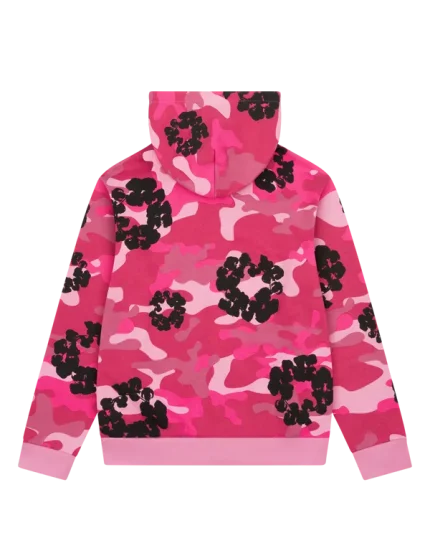Tears on Denim: A Symbol of Resistance, Pride, and Cultural Memory

Introduction
Denim has long been more than just a fashion statement. For generations, it has served as a canvas of identity, rebellion, and endurance. Often denim tears associated with working-class resilience, denim garments—especially jeans—have weathered the tides of time, socio-political movements, and cultural revolutions. But it is the tears on denim that carry some of the most profound symbolism. These imperfections, whether intentional or accidental, are not merely signs of wear; they are marks of history, echoes of voices that refuse to be silenced, and badges of pride worn by those who dare to challenge conformity.
The Origins of Denim: A Fabric for the Working Class
Denim's journey began in the 19th century, originally created as durable workwear for miners, cowboys, and laborers in the United States. Levi Strauss and Jacob Davis revolutionized the industry by reinforcing denim trousers with rivets, creating jeans that could withstand the harsh demands of manual labor. This association with strength and functionality laid the groundwork for denim to become a symbol of resilience. In its earliest form, denim carried the grit of the American frontier, the sweat of industrial workers, and the dignity of those who built nations from the ground up.
Rebellion Woven in Threads
As the decades progressed, denim transcended its utilitarian origins and began to symbolize youth rebellion and counterculture. In the 1950s, Hollywood icons like James Dean and Marlon Brando popularized denim as a sign of teenage defiance. Their tattered jeans and leather jackets weren't just fashion choices—they were silent protests against rigid societal norms.
The tears on their denim became metaphors for emotional and societal fractures. Ripped jeans, once seen as disheveled and undesirable, became statements of individuality and resistance. In the 1960s and '70s, during the civil rights movement and Vietnam War protests, denim again found itself on the front lines. Activists wore jeans as a rejection of elitist dress codes and as a unifying uniform of dissent.
Punk, Grunge, and Political Defiance
In the late 20th century, denim experienced yet another transformation. The punk movement of the 1970s embraced torn denim as a rejection of consumerism and political authority. These tears were often exaggerated, held together with safety pins or patchwork—each one telling a story of rage, creativity, and rebellion. In the 1990s, the grunge scene brought forth a new wave of distressed denim, this time infused with a sense of apathy and existential questioning. Bands like Nirvana wore frayed jeans not just for style, but as a reflection of societal disillusionment.
Throughout these movements, denim remained a democratic fabric—accessible to all and easily customized. The tears on denim continued to serve as non-verbal statements, worn with pride by those who felt disenfranchised, disillusioned, or determined to make a mark.
Denim in Marginalized Communities
For many marginalized communities, denim has also played a role in asserting identity and cultural pride. In Black, Indigenous, and immigrant communities, denim has often been a practical and affordable choice, but also one layered with meaning. For example, during the Black Power movement, denim jackets adorned with patches, slogans, and tears spoke volumes about the struggle for justice and equality.
In Chicano culture, denim is worn with a sense of style and defiance. Baggy jeans, customized denim jackets, and strategic distressing are more than aesthetic—they're declarations of belonging, resistance, and remembrance. For LGBTQ+ communities, denim has also been used as a form of silent protest, from the Castro district of San Francisco to the underground ballroom scenes in New York. Tears and customizations reflect battles fought for acceptance and rights, each rip a reminder of resilience.
Fashion or Memory: The Commercialization of Tears
As fashion cycles absorbed these cultural signifiers, distressed denim became mainstream. Ripped jeans that once symbolized resistance were now mass-produced and sold in luxury boutiques. This commercialization led to debates about authenticity. Can a pre-ripped pair of jeans from a high-end brand truly carry the same cultural weight as a pair torn from years of use on the streets, in protests, or on the job?
While some argue that mass-produced distressing dilutes the meaning of tears on denim, others see it as a form of homage. Fashion often borrows from the margins before cycling back into the mainstream. For some, wearing distressed denim—even if factory-made—is a nod to the spirit of those who originally wore their tears with pride.
Intergenerational Echoes
Tears on denim also act as vessels of memory. A ripped pair of jeans passed down from parent to child, or a denim jacket with patches sewn on by a grandparent, tells stories that transcend time. These garments become family heirlooms, not because of monetary value, but because of the history stitched into their seams.
In some cultures, worn clothing is seen as holding the energy of its previous owner. Tears, then, are not flaws to be hidden but stories to be honored. Denim, with its durability, allows these tales to be carried forward, generation after generation. The tears speak of sacrifices made, battles fought, and identities shaped through the fabric of everyday life.
Denim in the Digital Age
In today’s digital era, denim continues to evolve as a canvas for storytelling. Social media influencers, streetwear designers, and visual artists are reclaiming the narrative of distressed denim. Customizations—whether through embroidery, paint, or deliberate ripping—are once again becoming deeply personal. Online platforms allow for these stories to be shared globally, turning individual expression into collective memory.
Movements like slow fashion and sustainability have also re-emphasized the importance of wearing clothing that tells a story. Vintage denim, Denim Tears Hoodie with its natural tears and signs of age, is celebrated for its authenticity. In a world obsessed with the new, tears on denim remind us that beauty and meaning can be found in what endures.
Conclusion
Tears on denim are far more than fashion statements. They are rich with meaning, steeped in history, and alive with personal and collective narratives. From the dusty mines of the 19th century to the protest lines of the 20th and the expressive streets of today, distressed denim has always been about more than style. It is about resistance, pride, and memory.



